Position of a Point Relative to a Line
We will learn how to find the position of a point relative to a line and also the condition for two points to lie on the same or opposite side of a given straight line.
Let the equation of the given line AB be ax + by + C = 0…………….(i) and let the coordinates of the two given points P (x1, y1) and Q (x2, y2).
I: When P and Q are on opposite sides:
Let us assumed that the points P and Q are on opposite sides of the straight line.
The coordinate of the point R which divides the line joining P and Q internally in the ratio m : n are
(mx2+nx1m+n, my2+ny1m+n)
Since the point R lies on ax + by + C = 0 hence we must have,
a ∙ mx2+nx1m+n + b ∙ my2+ny1m+n + c = 0
⇒ amx2 + anx1 + bmy2 + bny1 + cm + cn = 0
⇒ m(ax2 + by2 + c )= - n(ax1 + by1 + c)
⇒ mn=−ax1+by1+cax2+by2+c………………(ii)
II: When P and Q are on same sides:
Let us assumed that the points P and Q are on same side of the straight line. Now join P and Q. Now assume that the straight line, (produced) intersects at R.
The coordinate of the point R which divides the line joining P and Q externally in the ratio m : n are
(mx2−nx1m−n, my2−ny1m−n)
Since the point R lies on ax + by + C = 0 hence we must have,
a ∙ mx2−nx1m−n + b ∙ my2−ny1m−n + c = 0
⇒ amx2 - anx1 + bmy2 - bny1 + cm - cn = 0
⇒ m(ax2 + by2 + c )= n(ax1 + by1 + c)
⇒ mn=ax1+by1+cax2+by2+c………………(iii)
Clearly, mn is positive; hence, the condition (ii) is satisfied if (ax1+ by1 + c) and (ax2 + by2 + c) are of opposite signs. Therefore, the points P (x1, y1) and Q (x2, y2) will be on opposite sides of the straight line ax + by + C = 0 if(ax1+ by1 + c) and (ax2 + by2 + c) are of opposite signs.
Again, the condition (iii) is satisfied if (ax1+ by1 + c) and (ax2 + by2 + c) have the same signs. Therefore, the points P (x1, y1) and Q (x2, y2will be on the same side of the line ax + by + C = 0 if (ax1+ by1 + c) and (ax2 + by2 + c) have the same signs.
Thus, the two points P (x1, y1) and Q (x2, y2) are on the same side or opposite sides of the straight line ax + by + c = 0, according as the quantities (ax1+ by1 + c) and (ax2 + by2 + c) have the same or opposite signs.
Remarks: 1. Let ax + by + c = 0 be a given straight line and P (x1, y1) be a given point. If ax1+ by1 + c is positive, then the side of the straight line on which the point P lies is called the positive side of the line and the other side is called its negative side.
2. Since a ∙ 0 + b ∙ 0 + c = c, hence it is evident that the origin is on the positive side of the line ax + by + c = 0 when c is positive and the origin is on the negative side of the line when c is negative.
3. The origin and the point P (x1, y1) are on the same side or opposite sides of the straight line ax + by + c = 0, according as c and (ax1+ by1 + c) are of the same or opposite signs.
Solved examples to find the position of a point with respect to a given straight line:
1. Are the points (2, -3) and (4, 2) on the same or opposite sides of the line 3x - 4y - 7 = 0?
Solution:
Let Z = 3x - 4y - 7.
Now the value of Z at (2, -3) is
Z1 (let) =3 × (2) - 4 × (-3) - 7
= 6 + 12 - 7
= 18 - 7
= 11, which is positive.
Again, the value of Z at (4, 2) is
Z2 (let) = 3 × (4) - 4 × (2) - 7
= 12 - 8 - 7
= 12 - 15
= -3, which is negative.
Since, z1 and z2, are of opposite signs, therefore the two points (2, -3) and (4, 2) are on the opposite sides of the given line 3x - 4y - 7 = 0.
2. Show that the points (3, 4) and (-5, 6) lie on the same side of the straight line 5x - 2y = 9.
Solution:
The given equation of the straight line is 5x - 2y = 9.
⇒ 5x - 2y - 9 = 0 ……………………… (i)
Now find the value of 5x - 2y - 9 at (3, 4)
Putting x = 3 and y = 4 in the expression 5x - 2y - 9 we get,
5 × (3) - 2 × (4) - 9 = 15 - 8 - 9 = 15 - 17 = -2, which is negative.
Again, putting x = 5 and y = -6 in the expression 5x - 2y - 9 we get,
5 × (-5) - 2 × (-6) - 9 = -25 + 12 - 9 = -13 - 9 = -32, which is negative.
Thus, the value of the expression 5x - 2y - 9 at (2, -3) and (4, 2) are of same signs. Therefore, the given two points (3, 4) and (-5, 6) lie on the same side of the line given straight line 5x - 2y = 9.
● The Straight Line
- Straight Line
- Slope of a Straight Line
- Slope of a Line through Two Given Points
- Collinearity of Three Points
- Equation of a Line Parallel to x-axis
- Equation of a Line Parallel to y-axis
- Slope-intercept Form
- Point-slope Form
- Straight line in Two-point Form
- Straight Line in Intercept Form
- Straight Line in Normal Form
- General Form into Slope-intercept Form
- General Form into Intercept Form
- General Form into Normal Form
- Point of Intersection of Two Lines
- Concurrency of Three Lines
- Angle between Two Straight Lines
- Condition of Parallelism of Lines
- Equation of a Line Parallel to a Line
- Condition of Perpendicularity of Two Lines
- Equation of a Line Perpendicular to a Line
- Identical Straight Lines
- Position of a Point Relative to a Line
- Distance of a Point from a Straight Line
- Equations of the Bisectors of the Angles between Two Straight Lines
- Bisector of the Angle which Contains the Origin
- Straight Line Formulae
- Problems on Straight Lines
- Word Problems on Straight Lines
- Problems on Slope and Intercept
11 and 12 Grade Math
From Position of a Point Relative to a Line to HOME PAGE
Didn't find what you were looking for? Or want to know more information about Math Only Math. Use this Google Search to find what you need.
Recent Articles
-
How to Do Long Division? | Method | Steps | Examples | Worksheets |Ans
Apr 22, 25 12:42 PM
As we know that the division is to distribute a given value or quantity into groups having equal values. In long division, values at the individual place (Thousands, Hundreds, Tens, Ones) are dividend… -
Division of Four-Digit by a One-Digit Numbers | Worksheet with Answer
Apr 22, 25 12:12 PM
In division of four-digit by a one-digit numbers are discussed here step by step. How to divide 4-digit numbers by single-digit numbers? -
Skip Counting by 10's | Concept on Skip Counting |Skip Counting by Ten
Apr 22, 25 11:53 AM
The concept on skip counting by 10’s or tens is an essential skill to learn when making the jump from counting to basic addition. The sequence chart will help us to write the number to complete the se… -
Worksheets on Missing Numbers from 1 to 25 | Missing Number Worksheets
Apr 22, 25 11:28 AM
Printable worksheets on missing numbers from 1 to 25 help the kids to practice counting of the numbers. -
Conversion of a Decimal Fraction into a Fractional Number | Decimals
Apr 22, 25 02:52 AM
We will discuss here about the working rule for the conversion of a decimal fraction into a fractional number. The rules of converting decimal number to fraction are
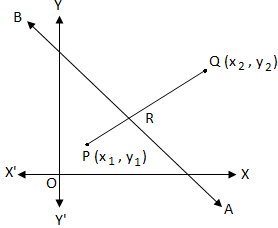

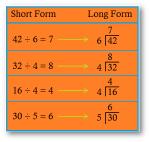
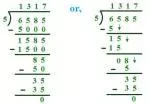
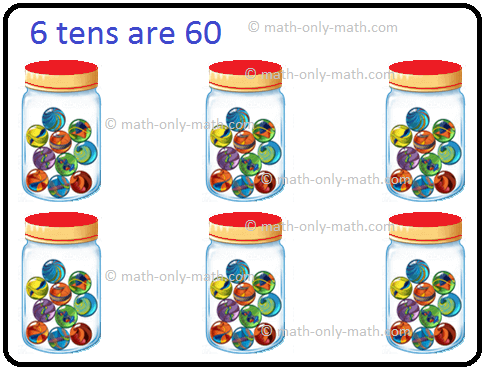
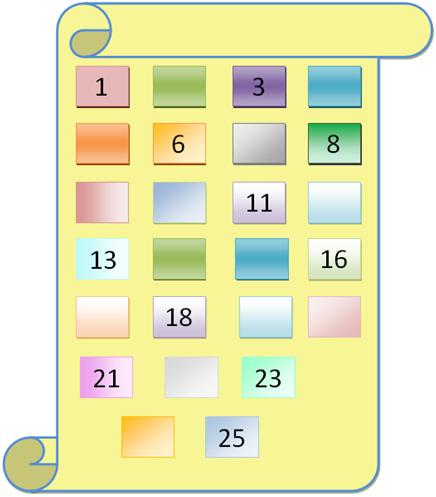
New! Comments
Have your say about what you just read! Leave me a comment in the box below. Ask a Question or Answer a Question.